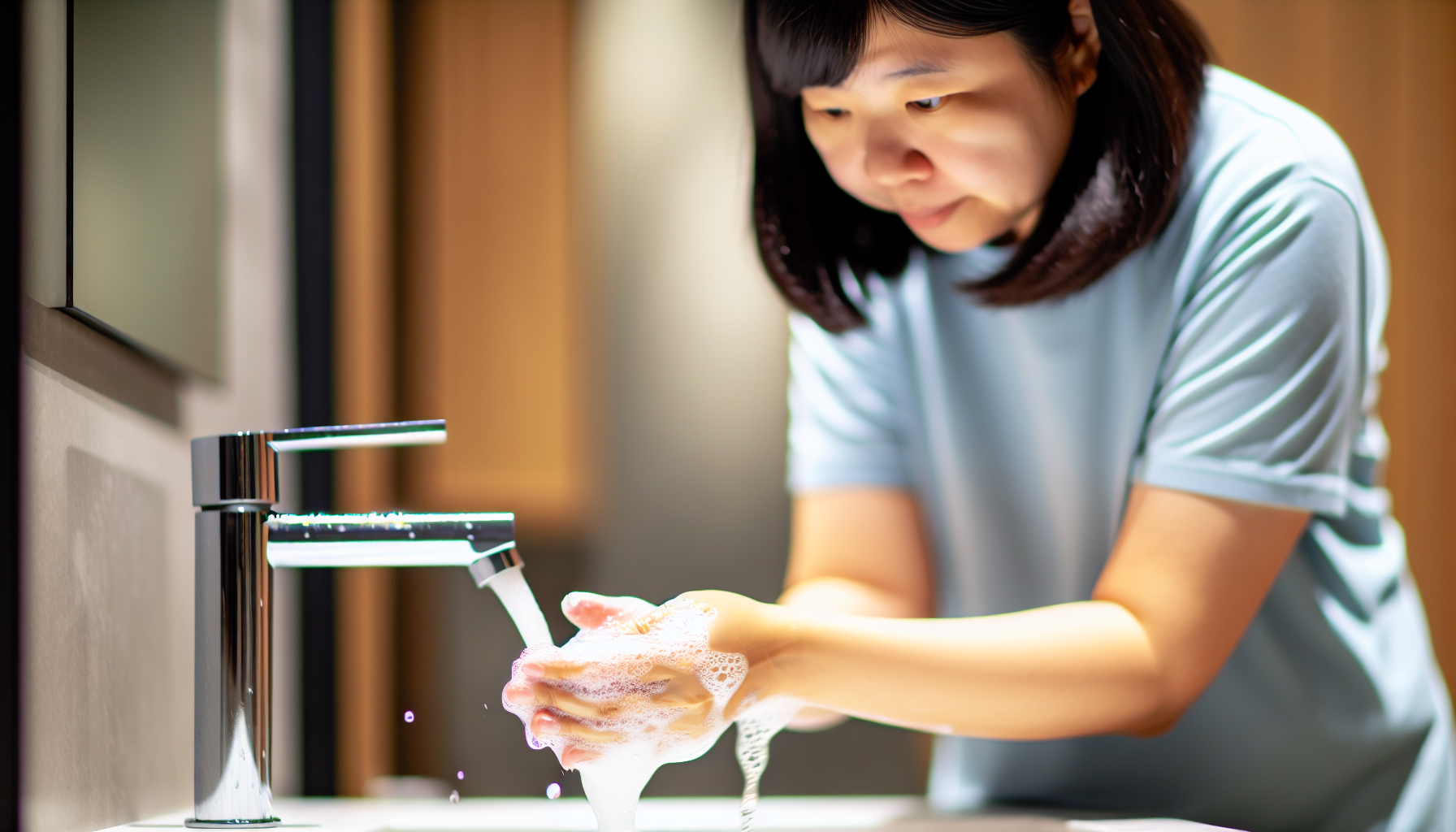Understanding Infectious Mononucleosis: Symptoms, Recovery, and Care Tips
Mononucleosis, often dubbed the “kissing disease,” is a common viral infection that primarily affects teenagers and young adults. Predominantly caused by the Epstein-Barr virus, it’s a condition that can leave one feeling extremely fatigued and listless, disrupting everyday routines. But what exactly is this illness, how does it manifest, and what can be done to manage infectious mononucleosis?
In the following sections, we’ll unravel the mystery surrounding infectious mononucleosis, delving deep into the causes, symptoms, diagnosis, and management strategies. We’ll also address some of the less common but equally important aspects of the illness, such as recognizing atypical symptoms and understanding when immediate medical attention is necessary.
Key Takeaways
-
Mononucleosis is caused by the Epstein-Barr virus and has a variety of symptoms, both common and less common.
-
Diagnosing mononucleosis involves physical exams as well as blood tests to detect antibodies.
-
Treatment for mono consists of rest, hydration and healthy dieting. Severe cases may require steroid medication with caution due to potential side effects.
The Epstein-Barr Virus and Its Link to Mononucleosis

The Epstein-Barr virus (EBV), a type of herpes virus, is the main culprit behind mononucleosis. This viral infection is communicable, earning its nickname “the kissing disease” due to its common transmission through saliva. Sharing utensils or glasses, and even close contact with an infected person, can lead to the spread of EBV and other viral infections.
Mononucleosis predominantly affects teenagers and young adults, especially those aged 15 to 17 and college students. While the infection usually resolves without treatment, it can cause substantial fatigue, disrupting daily life for many individuals. Interestingly, adults often acquire immunity to mononucleosis through previous exposure to EBV, which results in the development of antibodies.
Unpacking the Symptoms of Mono

Identifying the symptoms of mononucleosis mono is the first step towards diagnosis and treatment. The common indicators of this illness encompass fever, sore throat, and swollen lymph glands, which are the body’s immune response to the infection.
The sections below provide a detailed analysis of both the typical and less common symptoms of mononucleosis.
Identifying Typical Symptoms
Typical mononucleosis symptoms include:
-
Severe fatigue
-
Sore throat
-
Enlarged lymph nodes
-
Headache
-
Chills
-
Muscle aches
Fatigue, swollen lymph nodes, and a sore throat are particularly prevalent in children. These symptoms develop slowly over time, often taking 4-6 weeks to manifest following infection.
The common symptoms of mono include:
-
Fatigue
-
Sore throat
-
Fever
-
Swollen lymph nodes
-
Swollen tonsils with a whitish-yellow covering
Recognizing these symptoms is key for early diagnosis and intervention, helping to significantly reduce discomfort and speed up recovery.
Recognizing Less Common Symptoms
While the typical symptoms of mononucleosis are well-known, it’s also important to recognize the less common signs. One such symptom is the development of a pink rash, especially in individuals who take antibiotics such as ampicillin or amoxicillin.
Patients with mononucleosis may also endure liver complications like hepatic injury, acute liver failure, and elevated liver enzymes. Early identification of these symptoms can lead to timely treatment and avert additional complications.
Diagnosing Mononucleosis: Beyond the Physical Exam

Diagnosing mononucleosis involves a comprehensive process that goes beyond a physical examination. Though the physical exam, which assesses signs of swollen lymph nodes and an enlarged spleen, plays a significant role, it often falls short of providing a conclusive diagnosis. Hence, blood tests are conducted to identify virus antibodies and determine the white blood cell count, providing objective evidence of the virus’s presence.
Blood Tests and Their Role
When diagnosing mononucleosis, blood tests are of paramount importance as they analyze bodily fluids, including red blood cells and white blood cells. They identify specific antibodies to the Epstein-Barr virus (EBV), which are generated by the immune system in response to the infection. A high white blood cell count, for instance, indicates an active immune response to the infection.
The specific blood test used for diagnosing mono is the Monospot test, which detects specific antibodies in the blood. Mononucleosis can also lead to irregular white blood cell levels, including a rise in heterophil antibody levels.
The Best Treatment Practices for Mononucleosis

The best treatment practices for mononucleosis focus on alleviating the symptoms associated with the virus. These practices primarily involve rest, staying well-hydrated, and maintaining a healthy diet. However, in severe cases, steroid medication may be necessary to address the symptoms.
When Steroid Medicine May Be Necessary
Steroid medicine, like prednisone, might be necessary to manage severe symptoms of mononucleosis. It is particularly useful for short-term relief of sore throat or enlarged tonsils. Steroids work by utilizing their anti-inflammatory properties to alter the expression of inflammatory genes, thus reducing inflammation and alleviating symptoms.
Nonetheless, using steroids for mononucleosis treatment might result in potential side effects such as:
-
fatigue
-
loss of appetite
-
nausea
-
muscle weakness
It’s also worth noting that antiviral drugs are not typically recommended for mono treatment due to their ineffectiveness against the Epstein-Barr virus and inability to target the associated immune response.
Complications and When to Seek Immediate Care
While mononucleosis generally resolves without treatment, severe complications can arise, necessitating immediate medical attention. Significant swelling of the spleen, liver problems, and persistent sickness are some complications that should not be overlooked.
Certain risk factors may amplify the severity of these complications, which will be discussed in the following subsection.
Risk Factors for Severe Complications
Individuals with compromised immune systems, such as those with HIV/AIDS or those using immunosuppressive medications, are at a heightened risk of encountering more severe complications from the Epstein-Barr virus responsible for mono, one of the many infectious diseases that can affect people.
Immediate medical assistance for mononucleosis can deter severe complications through symptom monitoring, appropriate treatment, and early identification of potential complications. Certain serious complications linked to mononucleosis, such as upper airway obstruction and splenic rupture, can result in systemic issues, long-term morbidity, or even fatalities in certain instances.
Preventing the Spread of Mononucleosis

Preventing the spread of mononucleosis is possible with a few preventative measures. Since the disease is commonly spread through saliva, infected individuals should refrain from kissing, sharing food, dishes, or utensils, engaging in sexual contact, and participating in contact sports until their fever has improved.
Maintaining good hygiene practices can also go a long way in preventing the spread of mono. These include:
-
frequent hand washing
-
avoiding the sharing of personal items
-
covering your mouth and nose when coughing or sneezing
-
regularly cleaning and disinfecting frequently-touched surfaces.
Recovery Timeline and Long-Term Health
The recovery journey from mononucleosis usually spans from a few weeks to 3 months, during which most individuals fully recover and acquire immunity against future infections. However, the potential long-term consequences of mononucleosis can include significant loss of time from school or work due to profound fatigue and, in rare cases, severe complications.
For an improved recovery process, it is necessary to get enough rest, eat a nutritious diet, and keep properly hydrated. Over-the-counter pain relievers may also be utilized to alleviate fever or sore throat symptoms. Moreover, lifestyle adjustments like getting sufficient rest, staying well-hydrated, avoiding overexertion, and slowly reintroducing light to moderate exercise as energy levels rise, can aid in a more comfortable recovery.
Summary
In conclusion, mononucleosis, caused primarily by the Epstein-Barr virus, is a common illness that predominantly affects teenagers and young adults. While the virus is often transmitted through saliva, good hygiene practices can significantly reduce the risk of transmission. Recognizing the symptoms of mono, both common and less typical, is crucial for early diagnosis and effective treatment.
Although the recovery process can take a few weeks to 3 months, most individuals fully recover and acquire immunity against future infections. However, it’s important to understand that severe complications can arise, especially in individuals with compromised immune systems. Therefore, maintaining good health practices and promptly seeking medical attention when necessary is crucial.
Frequently Asked Questions
How contagious is mono in adults?
Mono is usually spread through close contact, such as kissing, or sharing utensils and drinks. It is highly contagious while the person has symptoms, which can last up to 4 weeks. Health experts aren't sure how long the virus remains contagious after the symptoms are gone, but it can spread for months afterward.
Does mono ever go away?
Mono is caused by a viral infection and usually only affects individuals once. Symptoms, such as fever and fatigue, typically disappear within 2 to 4 weeks; however, the virus stays in the body even after recovery.
Why do adults not get mono?
Most adults are immune to mononucleosis due to having built up antibodies from previous exposure to the Epstein-Barr virus, meaning they won't get the infection.
What are the long-term effects of mononucleosis?
Though most cases of mono subside within a few weeks to two months, EBV can cause long-term consequences such as certain cancers and autoimmune diseases, or complications of primary immunodeficiency.
How do you know if you have mono?
If you have a fever, sore throat, swollen lymph nodes, and fatigue, it is possible that you have mononucleosis. To be sure, consult a doctor for an exam and blood test.
Original content from the Upbility writing team. Reproduction of this article, in whole or in part, without credit to the publisher is prohibited.
You can also read:











